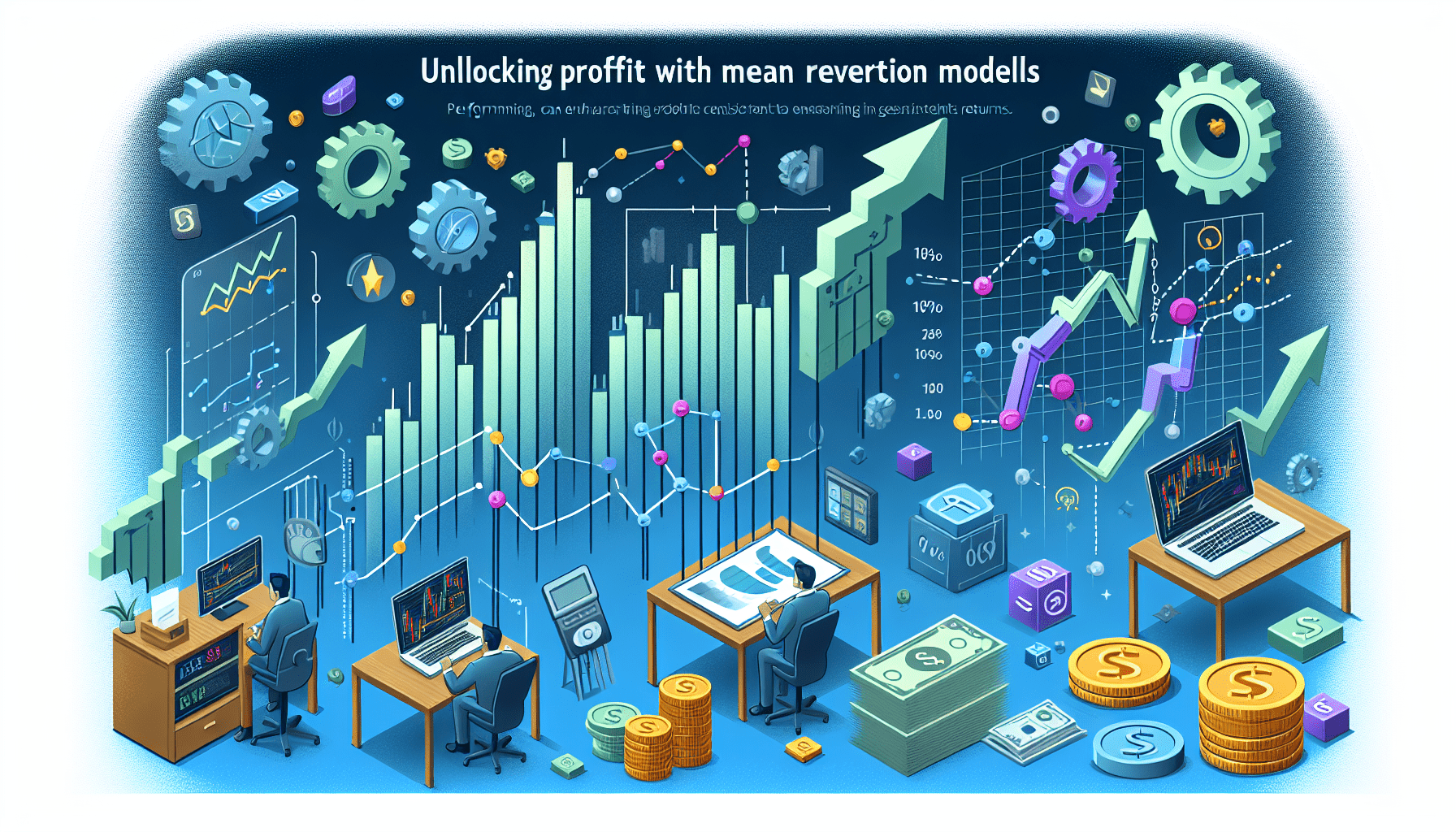Proven Prop Trading Automation: Master Advanced Strategies
In today’s competitive financial markets, prop trading automation has become a key differentiator for both retail traders and institutional prop firms. By leveraging advanced backtesting and automated trading systems, stakeholders can enhance their trading strategies, optimize risk management, and ultimately achieve higher returns. This comprehensive guide covers everything from essential automated platforms and backtesting best practices to detailed case studies illustrating real-world successes.
Figure 1: A detailed view of a prop trading automation dashboard in action.
Understanding Prop Trading Automation
Prop trading automation integrates sophisticated algorithms, real-time analytics, and automated backtesting systems to execute trades with precision. Automation helps traders eliminate emotional bias, swiftly react to market changes, and implement strategies that have been rigorously tested against historical data.
Why Automation Is Essential in Prop Trading
Automation facilitates rapid strategy evaluation and execution by removing manual intervention. This is especially crucial in a prop trading environment where milliseconds can impact profitability. Automated backtesting systems also allow traders to simulate multiple market scenarios, ensuring robust performance metrics like improved Sharpe ratios and reduced drawdowns.
Advanced Backtesting Concepts for Prop Trading
Backtesting is the cornerstone of developing a reliable prop trading strategy. However, certain pitfalls can lead to unreliable results if not approached correctly. Here are several advanced concepts to ensure accurate backtesting:
- Overfitting Prevention: Use out-of-sample testing, and split data into training and validation sets to avoid curve-fitting to historical noise.
- Walk-Forward Optimization: Unlike traditional backtesting, walk-forward optimization continuously recalibrates strategies against new data, improving real-world applicability.
- Out-of-Sample Testing: Reserve a section of the dataset exclusively for the final evaluation. This ensures your strategy holds up under unseen market conditions.
- Data Quality and Sourcing: Utilize high-quality tick data or bar data and adjust for corporate actions to guarantee accurate simulations.
Backtesting Pitfalls and Mitigation
Common issues such as look-ahead bias, survivorship bias, and data snooping can distort backtesting results. Implementing stress tests and scenario analysis can help identify and mitigate these complexities, ensuring that performance metrics like profit factor and max drawdown reflect true trading conditions.
Comparative Analysis of Leading Automated Backtesting Tools
When choosing a backtesting platform, prop trading professionals need to evaluate various features, integration capabilities, and pricing tiers. Below is a detailed comparison of several widely recognized tools:
| Tool | Backtesting Features | Data Quality & Availability | Integration Capabilities | Pricing & Use Cases |
|---|---|---|---|---|
| TradingView | Vectorized testing with commission/slippage settings | Historical data across multiple asset classes; real-time data available | Comprehensive API, broker integrations | Subscription-based with free trial; suitable for both retail and prop firm environments |
| NinjaTrader | Event-driven strategy testing with optimization capabilities | Extensive historical tick and bar data | Multiple broker integrations and third-party analytics support | Licensing options available; ideal for high-frequency trading |
| MetaTrader 5 | MQL5 scripting for automated backtesting and parameter optimization | Comprehensive data for forex, commodities, equities | Integrates with various broker platforms; supports algorithmic trading | Free demo version with affordable live trading; accessible for beginners and advanced traders |
| QuantConnect | Algorithmic backtesting using event-driven architecture | High-quality historical data for multiple asset classes, including crypto | Rich API and integration with popular brokerages | Cloud-based pricing; excellent for team collaboration in prop firms |
| Backtrader | Python-based, customizable backtesting with automated parameter optimization | Flexible data integration; relies on user-provided data | Easy integration with Python libraries and custom modules | Open-source; favored by quantitative researchers and prop trading startups |
Integrating Automated Strategies and Risk Management
Beyond backtesting, integrating automated strategies with live trading conditions is essential. Risk management ratios like the Sharpe ratio, maximum drawdown, and profit factor must be rigorously monitored. Prop firms often require compliance with regulatory frameworks such as MiFID II, ESMA, and NFA rules. Our case studies below illustrate how firms successfully streamlined their automated trading processes.
Case Study: Enhancing Strategy Performance at a Prop Firm
A mid-sized prop trading firm recently implemented an automated trading system using QuantConnect and NinjaTrader. They faced challenges including overfitting and delayed parameter optimization. By adopting walk-forward analysis and integrating automated scenario stress tests, they managed to:
- Improve their Sharpe ratio by 25% within three months
- Reduce drawdown by nearly 15%
- Accelerate iteration cycles, enabling real-time strategy adjustments
Such measurable improvements highlight the critical role of advanced automated backtesting tools combined with robust risk management practices.
Figure 2: Backtesting report example, detailing performance metrics and risk ratios.
Implementing Automated Strategies with Code Examples
Integrating code snippets can demystify the automation process for both novice and advanced traders. Below is a sample Python script using Backtrader, illustrating backtesting and risk parameter monitoring:
import backtrader as bt
class TestStrategy(bt.Strategy):
params = (('maperiod', 15),)
def __init__(self):
self.sma = bt.indicators.SimpleMovingAverage(self.data.close, period=self.params.maperiod)
def next(self):
if self.data.close[0] > self.sma[0]:
self.buy()
elif self.data.close[0] < self.sma[0]:
self.sell()
if __name__ == '__main__':
cerebro = bt.Cerebro()
cerebro.addstrategy(TestStrategy)
data = bt.feeds.YahooFinanceData(dataname='AAPL', fromdate=bt.date2num(bt.date2str('2020-01-01')), todate=bt.date2num(bt.date2str('2021-01-01')))
cerebro.adddata(data)
cerebro.run()
cerebro.plot()
Pro Tips: Enhancing Automation and Risk Management
Pro Tip: Always validate your backtesting results by integrating forward testing (paper trading) to monitor real-time performance indicators. Consider implementing a Risk Management Checklist to systematically guide your evaluation process.
Risk Management Checklist for Prop Trading Automation
Download our comprehensive Risk Management Checklist, which includes:
- Verification steps for data integrity and quality
- Parameters for out-of-sample and walk-forward testing
- Detailed instructions on mitigating overfitting and bias issues
- Guidelines for monitoring key performance metrics (Sharpe ratio, drawdown, profit factors)
- Best practices for integrating forward testing before live deployment
This checklist is an essential tool for both junior traders and seasoned quants at prop trading firms, ensuring every strategy is robust and compliant with current regulatory frameworks.
Internal Resources and Next Steps
For further insights on optimizing your prop trading strategies, explore our related articles such as Advanced Prop Trading Tactics and Automated Risk Management for Traders. Our resources offer in-depth analysis and step-by-step guidance designed to streamline your trading success.
Conclusion: Elevate Your Prop Trading Strategy
Prop trading automation is not just about deploying algorithms—it’s about refining your strategic approach through rigorous backtesting, advanced risk management, and continuous performance optimization. By integrating the tools and best practices highlighted above, traders at all levels can significantly enhance their decision-making process and trading outcomes.
As of October 2023, the industry continues to evolve. Stay ahead by adopting these advanced methodologies and leveraging state-of-the-art platforms to accommodate both fast-paced market environments and strict regulatory landscapes.
Ready to revolutionize your trading strategy? Download our Risk Management Checklist, experiment with the detailed code examples, and join our upcoming webinar for even deeper insights.







